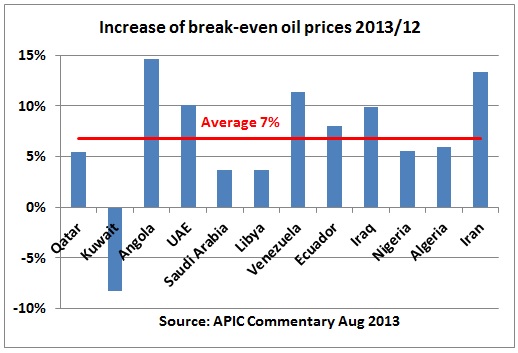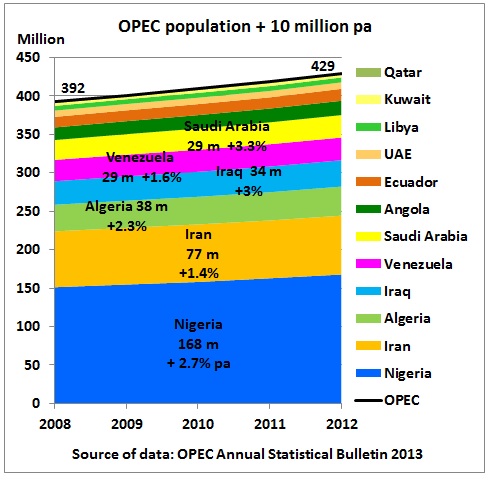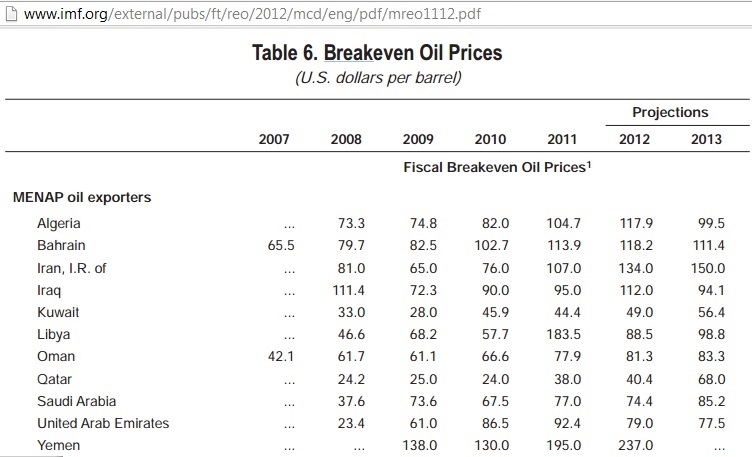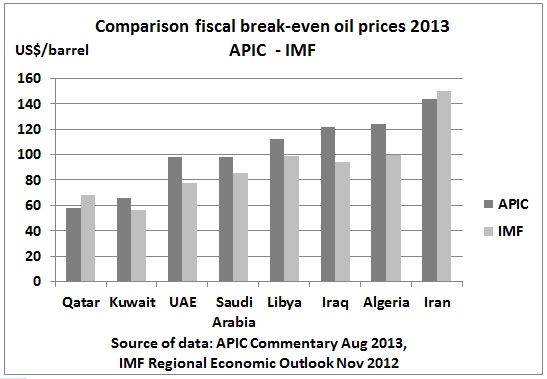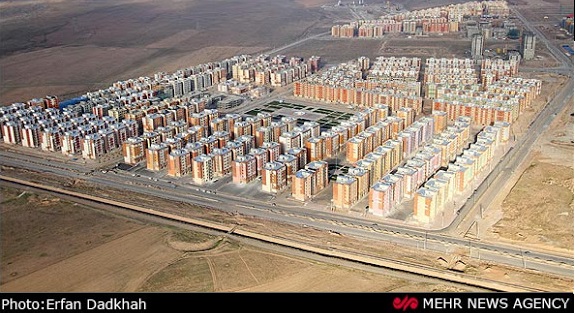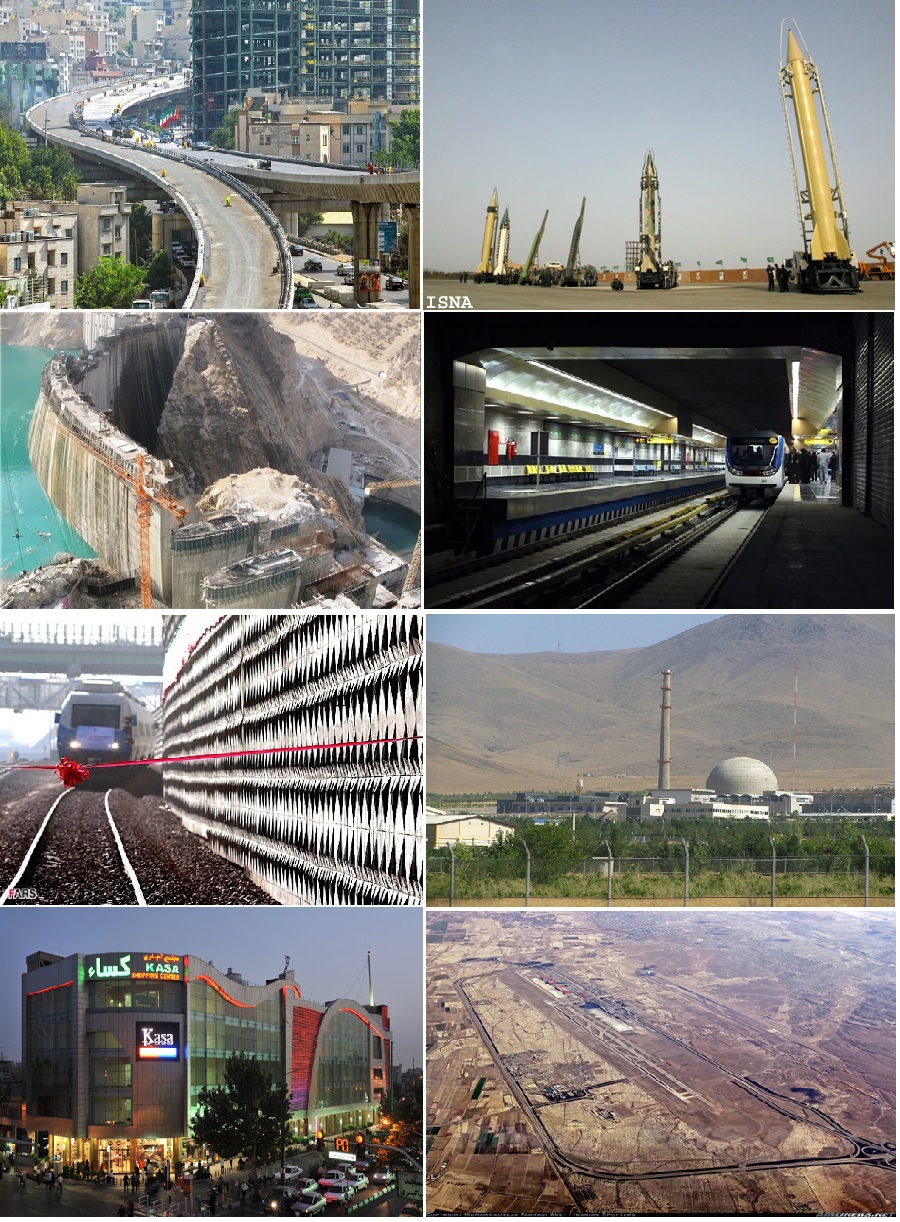Using recent research from the Arab Petroleum Investment Corporation (APIC) it can be calculated that OPEC’s fiscal break-even oil prices have increased by around 7% pa in 2013 while OPEC’s population grows by 10 million every year.
The fiscal break-even oil price is the average oil price which is needed for an oil exporting country to balance its budget in a particular year. It is an important metric for a country’s fiscal vulnerability to oil. If the break-even price is higher than the market price budgets cannot be balanced. 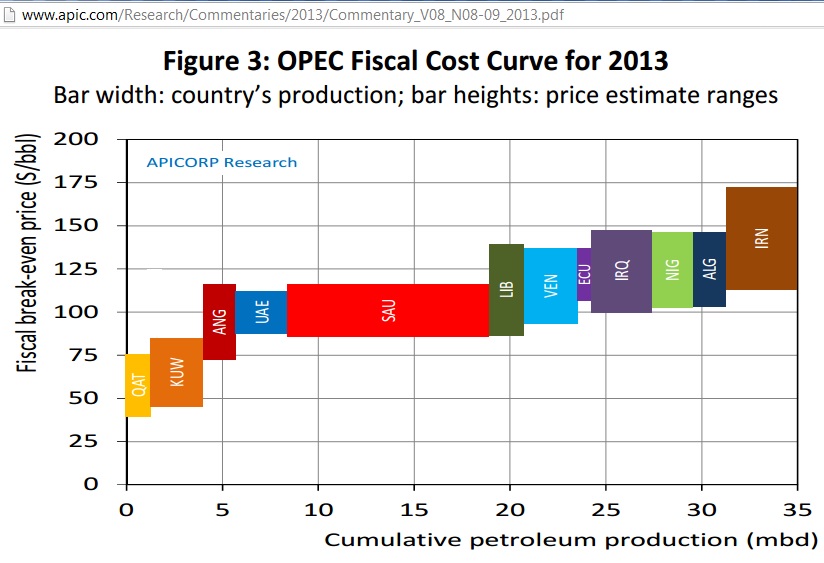 http://www.apic.com/Research/Commentaries/2013/Commentary_V08_N08-09_2013.pdf There are huge differences among OPEC countries. In the above graph, countries are sorted by fiscal break-even oil price. The width of the colored boxes is proportional to oil production and the height represents the range of results depending on assumptions. APIC is using following model:
http://www.apic.com/Research/Commentaries/2013/Commentary_V08_N08-09_2013.pdf There are huge differences among OPEC countries. In the above graph, countries are sorted by fiscal break-even oil price. The width of the colored boxes is proportional to oil production and the height represents the range of results depending on assumptions. APIC is using following model: 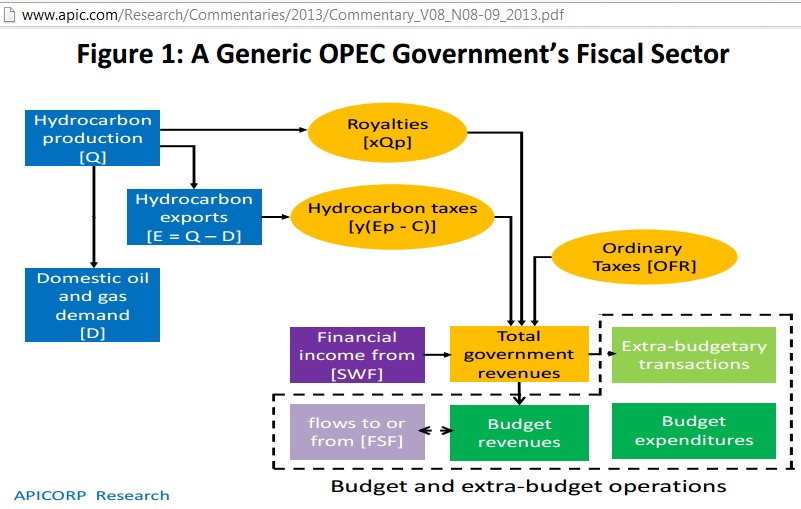 Break-even oil prices depend on oil production costs, population size, domestic demand for petroleum products, the resulting export/production ratio, royalties and taxes, exchange rates, non-oil revenue, general budget expenditure and operation of a stabilisation fund, if any.
Break-even oil prices depend on oil production costs, population size, domestic demand for petroleum products, the resulting export/production ratio, royalties and taxes, exchange rates, non-oil revenue, general budget expenditure and operation of a stabilisation fund, if any. 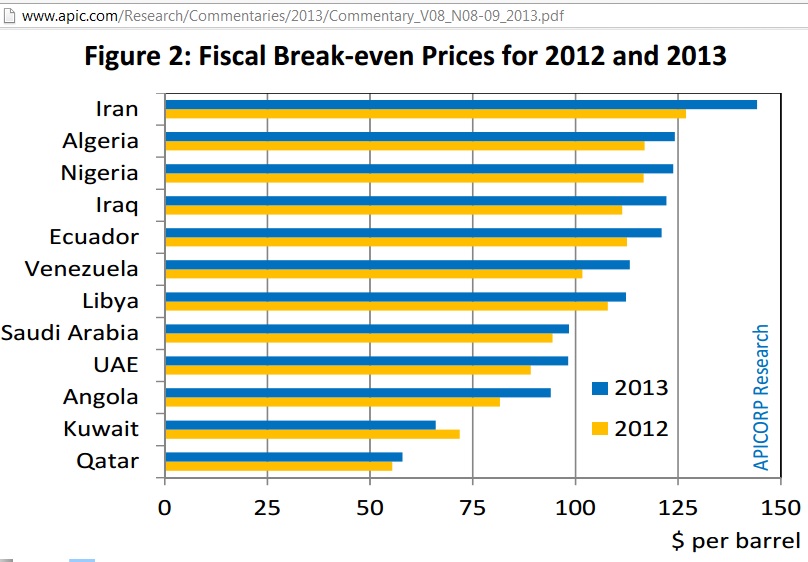 Except Kuwait, all countries had higher break-even prices in 2013 compared to 2012. Let’s calculate the average, weighted by crude oil exports as reported by OPEC
Except Kuwait, all countries had higher break-even prices in 2013 compared to 2012. Let’s calculate the average, weighted by crude oil exports as reported by OPEC 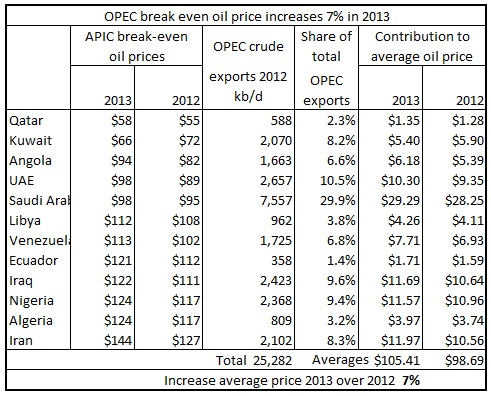
The average increase comes to around 7%. If Iranian crude exports – which look too high – are assumed lower by 300 kb/d, the percentage will go down by 1 decimal point, not much.
The increase of 7% is not uniform. Angola, UAE, Venezuela, Iraq and Iran had increases above the average, at around 10% and more. Now let’s compare APIC’s break even prices for 2013 with OPEC’s reference basket prices from the 2013 Annual Statistical Bulletin (table 5.1). http://www.opec.org/opec_web/static_files_project/media/downloads/publications/ASB2013.pdf 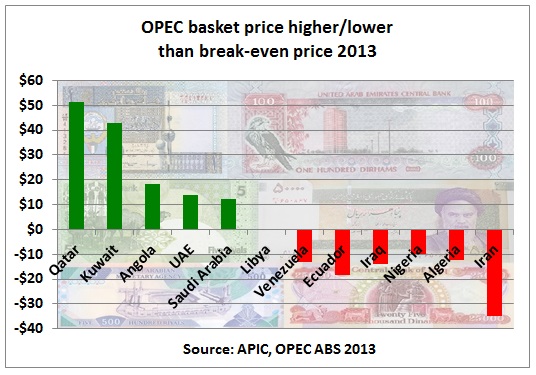 Countries in red have fiscal problems.
Countries in red have fiscal problems. 
Countries marked red in the previous graph have low crude export per capita ratios
Future break-even prices will depend on population growth
APIC’s Fiscal break-even prices have increased faster than OPEC prices 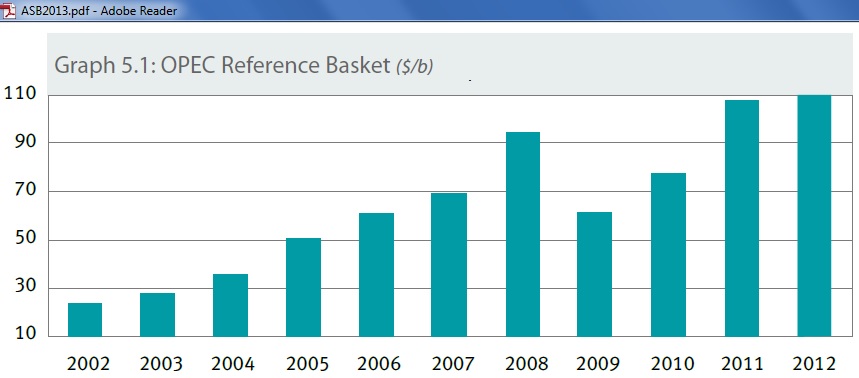 OPEC’s reference basket (ORB) prices have only increased from $107.46 to $109.45 in 2011/12 or 1.9 %.
OPEC’s reference basket (ORB) prices have only increased from $107.46 to $109.45 in 2011/12 or 1.9 %.
Comparison to IMF calculations
http://www.imf.org/external/pubs/ft/reo/2012/mcd/eng/pdf/mreo1112.pdf
We see that IMF’s break-even prices are generally lower than APIC’s calculations
Where the money is spent
Let’s take Iran with the highest fiscal break-even oil price
Public housing in Qazvin (West of Tehran on the road to Tabriz), important to keep the population happy http://www.uskowioniran.com/2013/06/qazvin-public-housing-development.html
Here are more examples:
From top: Sadr Expressway in Tehran, Missile program, Karoun 4 power plant, Tehran metro line 3, Tabriz-Tehran railroad, Arak heavy water plant, Kasa shopping centre, Imam Khomeini International Airport. Details can be found in: http://www.uskowioniran.com/
Ok, that gives us some idea about Iran’s high break-even oil price. Oh, and by the way, there are two public transport projects on this list which Australia down under hasn’t even started yet.
Conclusion:
There is no way back to cheap oil prices. If in the next phase of the financial and debt crisis oil prices should go down again like in 2009, several oil producing countries would not be able to keep their population happy, which will have geo-political consequences. Moreover, the world has not woken up yet to what OPEC’s population growth means for OPEC’s oil exports and oil prices.
Links for further reading
APIC’s break even prices for 2012
http://arabenergyclub.com/site/wp-content/uploads/2012/08/Commentary-Vol-7-No-8-9-Aug-Sep-2012.pdf
IMF’s Regional Economic Outlook Middle East and Asia Nov 2012
http://www.imf.org/external/pubs/ft/reo/2012/mcd/eng/pdf/mreo1112.pdf
Standard & Poor’s: How do Middle Eastern Souvereign’s Fiscal Breakeven Oil Prices Affect Credit ratings and Oil prices?
http://www.standardandpoors.com/spf/upload/Ratings_EMEA/HowDoMiddleEasternSovereignsFiscalBreakeven.pdf?elq=00000000000000000000000000000000
